The Elder Scrolls Online: Stop Worrying. Love the Bomb.
The Elder Scrolls Online is simultaneously the worst MMO and the worst Elder Scrolls game ever made.
Are you surprised by that statement? Shocked? Offended? Bemused? Dubious? You should be, but sadly, you’re probably not. Why? Because you probably already made up your mind about the Elder Scrolls online a long time ago, much like a significant portion of the internet. You read the rage and indignant rants about the lore, the dearth of content or NPC’s in the Beta, and the glitches, or how it’s too much like an MMO or not enough. Also how it’s too much like Skyrim or Oblivion, or not enough like them or Morrowind. Ad nauseum. If you did not immediately question the opening sentence of this article and have not had a chance to play the game for yourself, you may want to reevaluate your personal bias against the game. Chances are, it’s founded more on the internet hive mind than any valid criticism.
That’s not to say the Elder Scrolls Online is a perfect game or undeserving of criticism, and I intend to do just that in this and coming articles. However, I also intend to give a fairly factual and balanced account of my time with the game as I progress through it, to give you a well-rounded impression of the experience. Because if there is one thing that is undeniable, it’s that Elder Scrolls Online is big and complex. Because of that, I did not feel it would be fair to trot out a review and plop a number on a game that, A) isn’t released, B) is largely dependent on a community that is not fully present, and C) I have only scratched the surface of it.
I’ve spent some time in the Beta’s and most recently in the Early Access Version of the game, which is in fact still being worked on. I have accomplished a few things, seen some sights, tried the features, played the game. However, I don’t feel I have a complete picture of the game. So for now, I leave with my experiences so far in the game (The good, the bad, and the facts), and I’ll post an updated impressions article every week that details my experience with the game.
The Facts
| The Elder Scrolls Online | Release Date | Price | Monthly Fee | Min Requirements | Controller |
| Xbox One | June 2014 | $59.99 | $14.99 | Xbox Live Gold | Yes |
| Playstation 4 | June 2014 | $59.99 | $14.99 | NA | Yes |
| PC | April 4th 2014 | $59.99 | $14.99 | Processor: Core i5Memory: 4GB RAMHard Disk Space: 60GB freeVideo Card: NVIDIA GeForce GT 650M, ATI Radeon HD 5770 | No |
| Playable Races | Faction | Class Leanings |
| Argonian | Ebonheart Pact | Dragonknight/Templar/Sorceror |
| Altmer | Aldmeri Dominion | Sorcerer/Templar |
| Bosmer | Aldmeri Dominion | Nightblade |
| Breton | Daggerfall Covenant | Templar/Sorceror |
| Dunmer | Ebonheart Pact | Any |
| Khajiit | Aldmeri Dominion | Dragonknight/Nightblade |
| Imperial(Imperial Edition Only) | NA | |
| Nord | Ebonheart Pact | Dragonknight |
| Orc | Daggerfall Covenant | Dragonknight |
| Redguard | Daggerfall Covenant | Dragonknight |
| The Factions | Territories | Motivation | |
| Aldmeri Dominion | Alinor, Elsweyr, and Valenwood | Elf Supremacy | |
| Daggerfall Covenant | High Rock and Hammerfell | Imposing Peace | |
| Ebonheart Pact | Skyrim, Morrowind, and Black Marsh | Martial Preparedness |
I’ll stop the death by charts. However, here’s a bit more info that’s pertinent for you to know before making a character. Unless you pre-ordered, races are locked into the assigned Factions, and even for pre-orders you can’t change it once you’ve picked. Only when you hit level 50 will you be able to interact with the lands of other factions. Prior to that, you can only travel your own factions lands and Cyrodiil once you reach level 10. When visiting the other lands, it will be end-game/high level content only. You will not be able to play with lower level characters or players from other factions. So you will need to coordinate factions with friends, once picked.
While certain Races have tendencies that lean towards certain classes, you can really play any class as any race. Ideally you’d match your races strengths to the class strengths, but the game is perfectly playable if you don’t. Also, any class and race can use any weapon or armor, so there’s no limitation there, except in visual styles. I’ll explain this later. You have 8 character slots though, so feel free to try all the races/classes/factions.
There’s a lot more I could go into detail about, and I will get into a bit of it below and in the coming weeks. For now, we’ll take it a little bit at a time.
The Good
So, I think the big question is, how does this game compare to other Elder Scrolls game. To give you all some perspective, I’m not a fan of Morrowind. I like Oblivion, and Skyrim is my favorite of the games so far. I know that will disqualify my opinions for many of you Morrowind fans out there, but I will try to offer detailed explanations so you can judge based on reasoning and not solely on my opinion. So, with that out of the way, I’d say the game fares comparably quite well.
To begin, it’s an MMO, but not entirely MMO-like. It’s an Elder Scrolls game, but not entirely an Elder Scrolls game. That seems like an obvious statement, but it’s something that’s important to remember as this can be a good and sometimes bad thing. First and foremost, however, is the feel of the world. It feels like Tamriel with the architecture, from Ayleid to Dwemer ruins, to the cities, races, and clothing, along with the books, the wilderness and on and on. It’s all there.
Visually, the game is not the most impressive game you’ll find on PC, but you don’t expect that from an MMO. However it can definitely hold it’s own with most MMO’s on the market and does not shame the franchise. I’m not a tech-head in this regard, but as long as you’re not demanding the best visuals this side of Star Citizen, you will be satisfied. The art style, on the other hand, is subjective. So I will leave that up to you.
The combat, by necessity, is more of an amalgamation of what you’d expect from an MMO and the Elder Scrolls. The basic combat system you’ve seen in Skyrim is there. Weak and heavy attacks, spell casting, blocking, ranged and so on. Although, now they’ve added dodging – at the cost of Stamina – and the ability to stun enemies. You hit enemies and see their life bars go down, so your hits are based on actually hitting the enemy unlike usual MMO combat. First person is the norm, but third is also an option. The basics haven’t changed much.
Much like other MMO’s, you have a large stable of Active Skills that you rely upon which are neatly nestled in a hotbar. Five basics and one ultimate. These combat skills, bought with skill points from a skill tree, allow you to perform various resource-based attacks. Meaning that some use Magicka, some use Stamina and the Ultimates use, well…, Ultimate Points which you must accumulate through combat. Obviously, spells use Magicka and Physical attacks use Stamina. This adds a layer to combat, and you will find yourself likely using these abilities far more than your standard attacks.
That’s not to say that the two systems don’t mesh well. Resources are finite, and you will often find yourself resorting to using base attacks and, yes, even tactics. The ability to interrupt enemy strong attacks is a great feature, and blocking certain attacks allows you to stun them as well so that you can unleash heavy attacks of your own. Knowing when to block and interrupt, when to time your attacks, use special abilities and combine these all, makes for some very interesting protracted fights with some of the harder enemies.
Of course, when you’re in the Group Dungeons, the dynamic reverts very much back to the standard MMO Trinity. DPS, Healer and Tank. Even so, tactics come into play here, as on a recent dungeon run we found that certain approaches were deadly for our group and simple adjustments and planning made a vast difference. Position is very key in group combat such as these as is knowing which enemies to target first. However, combining the two with real time combat requires some real coordination at times to ensure everyone doesn’t end up at the dungeon respawn point.
Also good to see is the implementation a somewhat solid group finding mechanic. You simply tell it the mission or area you want to run in, tell it how large a group, and wait! You can run around and do other things while you wait. A basic and obvious feature, but it works well already. You can also teleport to the location of any of your party members, making it easy to meet up. Nothing revolutionary, but functional.
There are some places where the gameplay takes a rather radical departure from Skyrim(I’m using Skyrim in all of these examples because it is the most widely played game in the series thus far and is therefore a good reference point for most fans of the series). However, these are of a necessity more complex than what you’ve come to expect in previous entries. Despite that, they are mostly recognizable. You’ve got much of your basic side activities, from Horse riding, to fishing, to smithing, enchanting, alchemy and provisioning(cooking). They’ve added Clothing and Woodworking as well. The former being used now for light and medium armor, the latter used for creating things like certain shields, staffs and bows.
All crafting now has a deconstruction, refinement and improvement feature in one place. There are no individual stations for these functions. Deconstruction is new, wherein you can actually destroy existing items to scavenge materials from weapons and armor your find out in the world. This comes in handy as harvesting ore, jute and other materials is not always the most ideal way of collecting materials. Being able to collect crafting materials through incidental looting after combat is a great option to have.
Enchanting works slightly different as well, no longer requiring the use of Soul Gems, aside from recharging weapons. Actually attaching enchantments to weapons now involves attaching Glyphs with the abilities you want to the weapon of your choice. Unlike other games, there are no slots for the Glyphs, it works similar to adding enchantments to weapons in previous Elder Scrolls games, where it’s one and done. One thing that’s nice however, is you can attach a Glyph to a weapon anytime, anywhere by simply right clicking on the item. As before, certain enchantments can only be attached to certain item types.
Runes themselves add a layer of complexity to the enchanting system. You can buy or find completed runes that add abilities to your weapon and simply add them. However you can also find components for crafting Glyphs or simply take existing Glyph apart to create new ones. The Glyph system works similar to Words of Power in that they are made up of three runes representing words to make a phrase. This phrase determines the Aspect(quality), Essence(Stat) and Potency of the Glyphs. This part all needs to be done at the enchanting station.
Armoring, Clothing, Woodworking and Smithing work similarly. You need the base component to construct the material need, be it Iron, Just, Leather or Wood. More advanced materials are available as you level. You determine the stats of the object you’re crafting with the number of materials you put into the gear, but it also determines the level. However, there are two new systems in play.
The first is purely aesthetic and is based on Racial Motifs. These are the distinct weapon styles which are no longer determine a weapons stats, merely it’s appearance. There is on from each race in the game as well as Ayleid, Daedric and Primitive. You start off only able to create weapons in the style of your race, but you can acquire more styles as you progress.
The second new aspect is traits. Traits seem a lot like enchantments, but they are in fact separate bonuses you can add to your weapons such as the increaser armor penetration or faster XP gained on skills. This system, oddly enough, works like enchanting used to, in that you must destroy an item that has the trait you want to learn in order to learn it. Unlike Enchanting, no soul gems are required, the ability does not need to be charged on the weapon and researching can take hours. Though the length of researching can be mitigated by allotting skill points to relevant skills.
Speaking of skills, there is a new level progression system in ESO. Leveling works much like any other traditional RPG. You gain EXP from killing things or completing quests and you level up. However, you still have the old style progression system for individual abilities. Meaning you level smithing by smithing, clothing by making clothes, Two Handed by using Two handed weapons and so on. As your main class level goes up, you will gain Attribute Points which can be used to increase your Health, Stamina or Magicka.
You will also gain Skill Points, one per level, but you can also gain one for every three Skyshards you find in the world or from completing certain quests. These allow you to unlock new skills, both Passive like Perks from previous games, and Active skills as well. Active skills also level through their usage eventually coming to a state where they can be morphed into more powerful versions of themselves, though doing so requires the use of a Skill Point. There are tons of Skills under all kinds of categories from combat to crafting, so Skill Points are extremely useful and sought after.
One new element, though minor, is the ability to actually level your mount. By feeding your mount once a day, you can increase one of three attributes. It’s Speed, Stamina(used for sprinting) and it’s Carrying Capacity. The last is not something I’ve found useful of yet. It’s minor but interesting. There are of course more expensive horses you can buy, with higher base stats, but there is a decent base starting horse available to everyone for one gold. You can own up to four horses if you so desire and name them as well.
The story of course, is objective so I won’t comment on the quality. However, much like Skyrim, there are two major overarching plots. One being an Evil Daedra(Molag Bal) trying to take over the world again and the other being a huge civil war and battle for the throne of Tamriel. All NPCs are fully voice acted and there are 10,202 NPC’s in the game, all with Voice Acting, though not all with much dialogue and 2,235 books in the game. There are the other usual guilds such as Mages, Fighters and so on, with their own storylines and sidequests abound all over the world. Quest indicators are there, as is fast travel(for a cost). Another nice feature being indoor/outdoor transitions are now often instant loads.
The final large element, PvP, is alas one I haven’t had the chance to experience yet. Involving the battle for the capital city and the imperial throne, it promises some large scale battles with siege engines tons of action. Sadly, I will have to follow up with this in next week’s post.
The Bad
Depending on what you’re looking for from the game, it is likely that all of the above sounds as great to you as it does to me. However, there’s still plenty of room left for criticism. There are various niggling issues I’ve run into, from minor to major that can put a damper on the experience. Let’s look at some of these.
First off, let’s get this out of the way. The Elder Scrolls Online is buggy. VERY buggy. However, so was Skyrim, Oblivion, Fallout 3, Morrowind and likely every other game in the series or using the series engine. This of course is a different dev and different engine. Still, games of this scale tend towards the glitchy side. Of note, when I began on Sunday, there were several major bugs in the game that were fixed not two days later. If the team continues to be that responsive, it’s potentially a good sign. Of course, there are still several other bugs that need to be addressed. Such as temporarily losing the ability to call my horse, my inability to zoom in during the character creation or to see party members.
Still, bugs and glitches are no greater in quantity than you’d expect from your average Elder Scrolls entry. Whether or not that is acceptable is dependent on whether or not you found it so in their previous games. Keep in mind, this is a monthly subscription game with promises of regular updates and weekly maintenance. Still it’s worth noting for those without previous Elder Scrolls experience. There will be quests you can’t finish, things you can’t do until they are patched. This can be frustrating, but with a world as large as this, there is always something else to do.
There’s quite a few other niggling issues. I noted the sheer number of NPC’s in the game, sadly there’s also a large number of players and at times it can be a chore to tell the two apart. I’ve resorted to using the UI tweaks to put Health Bars on all NPC’s so that I can tell from a glance who is an NPC and who isn’t When in shops this is usually crucial for finding the shopkeeper among the throngs of players.
Then there’s the inability to have subtitles for all text. You get the text during the zoom faced conversations we’ve all come to know so well from these games, but during cutscenes there is no option for it. This is by no means a deal breaker but a feature many of us enjoy having. Along these lines, sometimes the text doesn’t match the voice acting for the close up sequences, though I’m sure this is an easy enough fix.
There is an even more egregious issue with conversations though. They can be interrupted by enemies. That’s right, sometimes, you will be talking to an NPC when some random enemy will notice you and decide to start attacking you. Luckily the game is intelligent enough to end the conversation, but this really should NOT happen. It can frustrating sometimes when you’re well into a conversation and have restart because some random wolf decided to bite your ankles.
To make it a bit worse, everything in this game seems to cause you to sheathe your weapon and doesn’t unsheathe once complete. This is a minor issue, but can get frustrating, since it takes time to unsheathe and you can use any abilities without first unsheathing, even magical ones. This can become dangerous in instances where you’re attacked during a conversation or when having to perform certain tasks for quests in areas infested by enemies.
Also somewhat odd is the way quest markers sometimes work now. Because they can be inconsistent. Elder Scrolls games offer two marker types, an Arrow for items behind a loading screen and Arrow/Door Icon for those behind loading screens. In previous games, Loading Screens have been synonymous with doors, but in ESO that is no longer the case as many doors are now instant transitions. Because of this, the indicators can sometime be misleading, causing you to expect something to be outdoors/indoors when it is in fact now. This is more an issue of eliminating conditioning from previous games, but it can still be irksome.
One place where The Elder Scrolls has never excelled in has been characters faces and ESO is no exception. While the faces are pretty enough finally, the talking animations are pretty terrible. Characters lips barely move and sometimes it looks like their faces are completely static while they are talking to you. This can make for some very disturbing and awkward blank stares during emotional speeches or just regular conversation. I have seen some interesting and well done emoting, but for the most part, characters facial animations and especially their lips make conversations awkward and bland. It’s sad because they have a large amount of voice acting, some bad, but some actually quite good.
Yet one of the bigger things that I’m sure will raise some ire though, is the lack of official controller support. What is especially egregious about this omission is that the game is being ported to consoles. So clearly the game will implement controllers and the development team are clearly aware of how to do so, they’ve simply chosen not to. Worse is the fact that several other MMO’s implement controller just fine. I’ve taken to using Xpadder so I can use my 360 controller, but it’s less than ideal. Something game companies need to learn is that more option, even what you consider bad ones, is NEVER a bad thing.
The grouping system also has some serious issues. The obvious one is the fact that players can decide what role they want to play. Since the game allows players to mix and match classes and play styles, some people might fancy themselves a healer or a tank, sadly that does not make it so. For instance, my Templar has healing abilities, but the way I’ve specced him, he is much better at DPS. While I might be able to keep myself and a friend alive while running around the world, there is no way in hell I could keep my party alive in a tough boss or dungeon fight. However, anyone can pick any role, so when you jump into party finder you may end up with a completely inadequate group.
Finally, there is what I feel is by far the most egregious issue with ESO and that’s the way quests and in world resources are handled. Everyone in the world shares resources and quest objectives. What this means is, see some ore over there you want to mine, oops, I got to it first, too bad for you! Want to kill that enemy for your quest?! Too bad, I killed it first! Need to bring him in alive? Too bad, I killed it! Want to kill all these enemies for EXP, sorry there’s a mob here spawn camping everything, you’ll never be able to attack anything.
This system lends itself to abuse and I’ve seen it used for it quite a bit. Users spawn camping quest objectives to leech EXP off of other players often making it more difficult for them to complete their quests. It’s extremely frustrating and is the closest thing I’ve found to a deal breaker in the game. This really needs to be fixed. The fact that these items respawn is not enough because right now, we’re playing with a limited community. Once the game launches I expect this problem will compound exponentially as finding resources or completing quest objectives is overwhelmed by the influx of players.
Looking Forward
Still, overall, I’ve found myself immensely enjoying my time with the game. It’s been plenty of fun with intermittent bouts of frustration and annoyance, and yet I still find myself coming back regularly. In essence, it’s the kind of experience I’ve had with so many other games in the Elder Scrolls series. The game will continue to evolve, hopefully for the better with glitches getting ironed out, quest objectives and resources instanced, and other niggling issues resolved. As far as I can tell, there’s no microtransactions present in the game, though it’s expected they will come. So far, I can’t imagine that they’ll be very impacting as much of what I’d usually expect from that type of addition is already present in game. I expect it will largely be cosmetic.
So what you’re left with is a $60 game with a $15 dollar a month fee. If you’re on Xbox, you might feel tempted to add the cost of Live as well, although I figure you’d likely be paying for Live anyways. Still, that’s quite the monetary investment. True, the first month is free, but the initial $60 purchase is a big gamble to take. So I guess you’re wondering if I’d recommend it. Well, I have to respond with a yes, but with a few caveats.
- If you’re nitpicky about what you believe an Elder Scrolls game should be, this is likely not for you. That means if you’re the kind of person who will nitpick every slight deviation from lore, gameplay or mechanics of other games, then move along.
- If you are looking for another traditional MMO, move along. While very similar in nature to many MMO’s, this is very much a Single Player Elder Scrolls made into an MMO. It was clearly built as an Elder Scrolls game first and an MMO second.
If you don’t fall into those two categories, but are still on the fence, fear not! I will continue my coverage as I delve deeper into the world, experiencing higher levels, PvP, End Game content and everything else that comes along. Hopefully through my blundering and learning, you’ll be able to decide whether the Elder Scrolls Online is your first, next or maybe even last MMO.


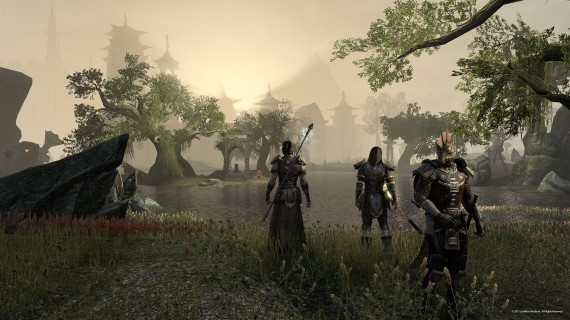
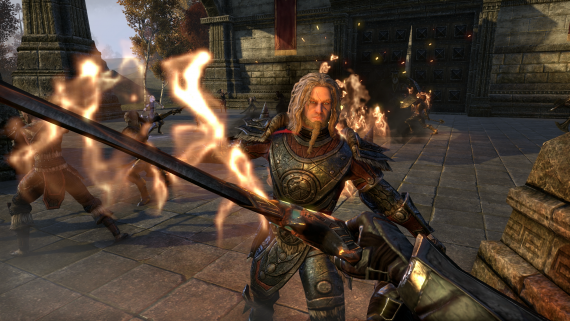
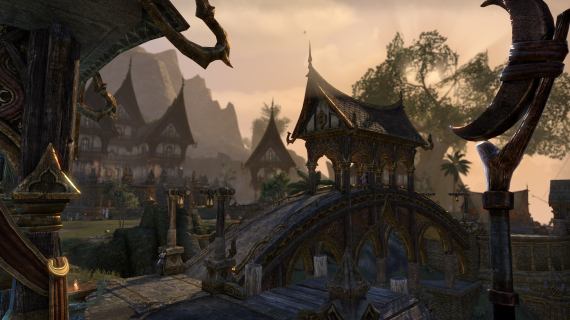
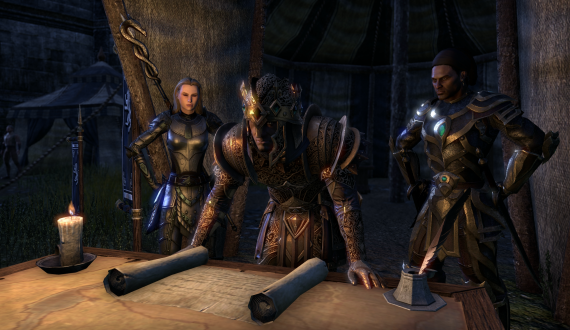
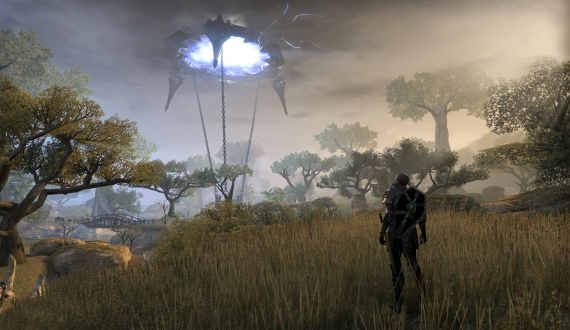
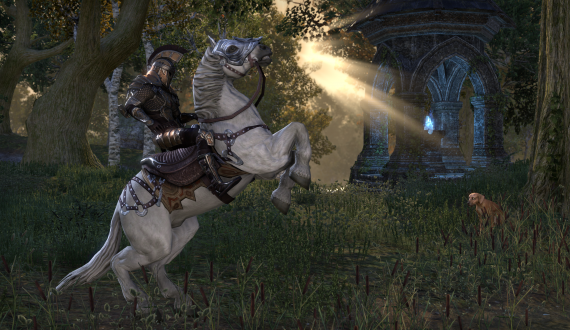
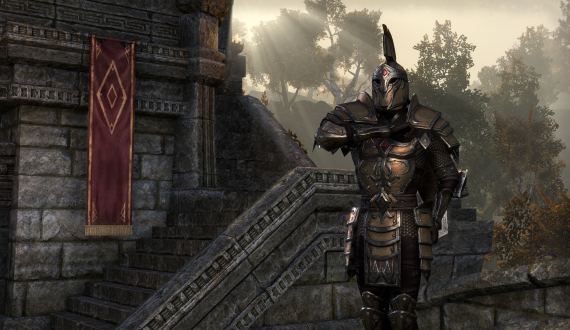
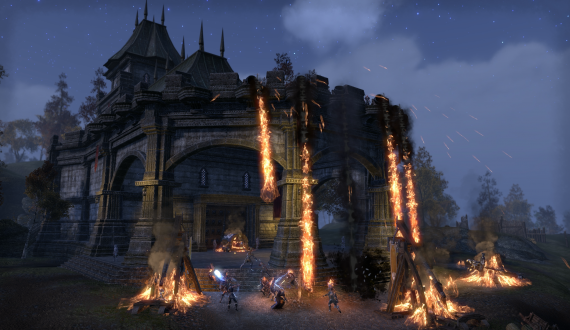
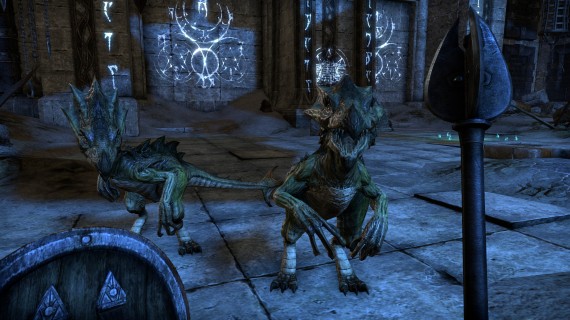
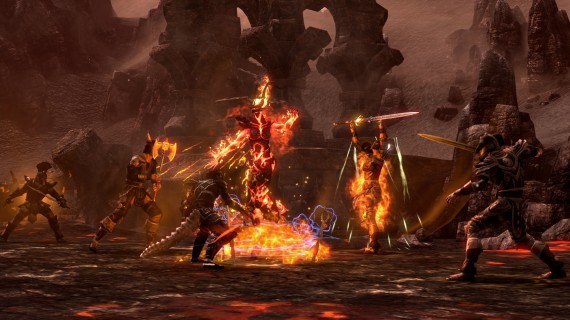
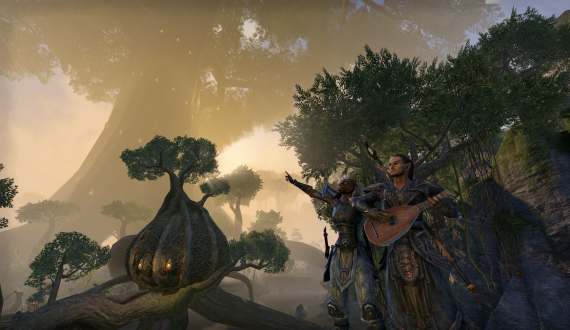
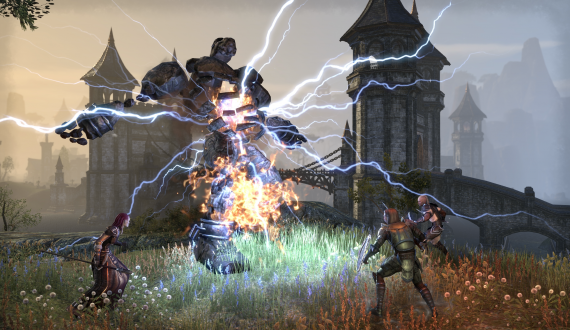
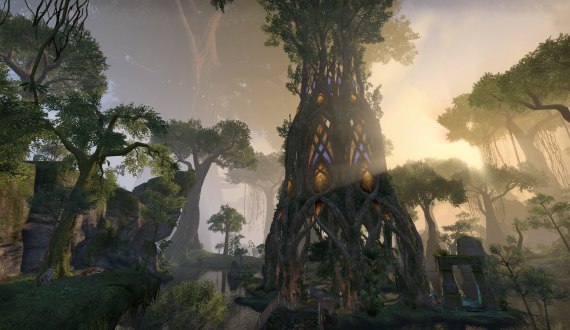
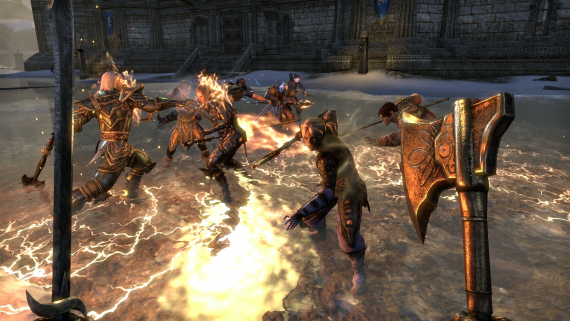
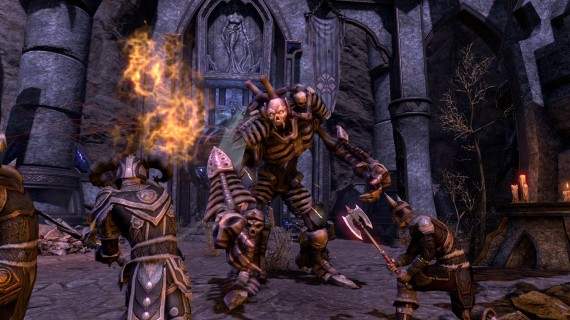
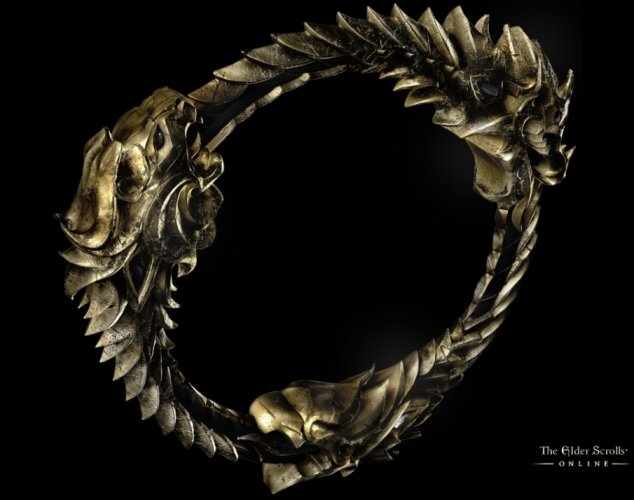
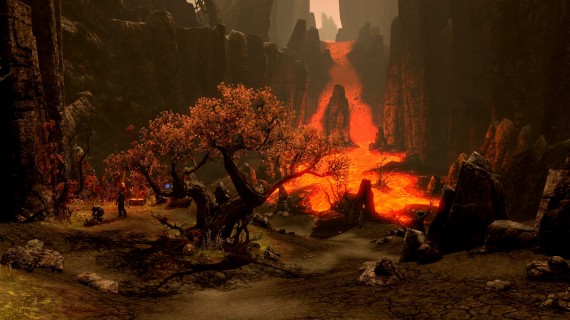
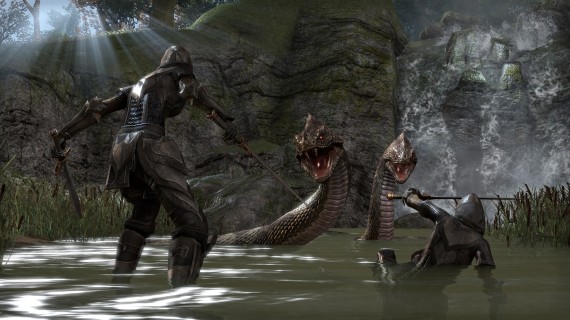
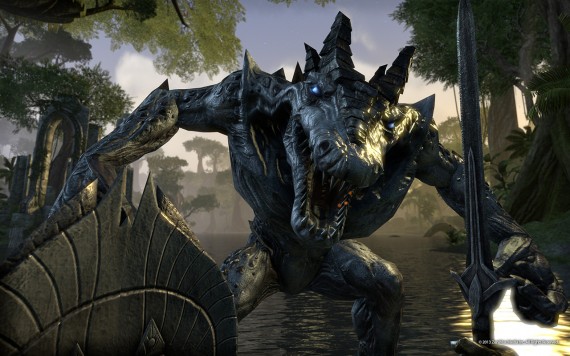
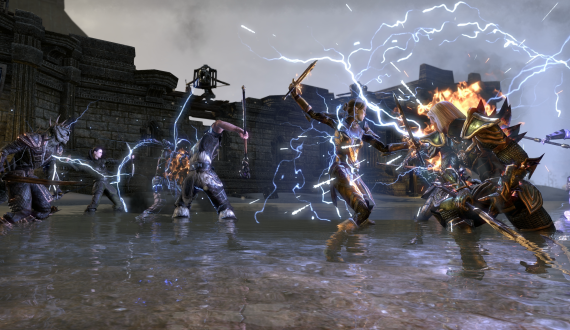
Responses